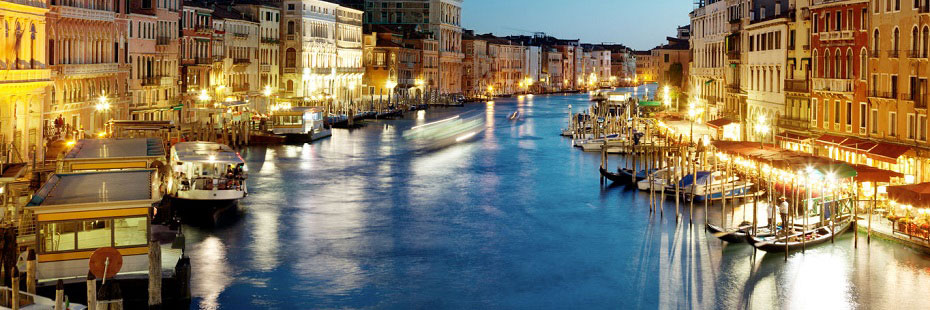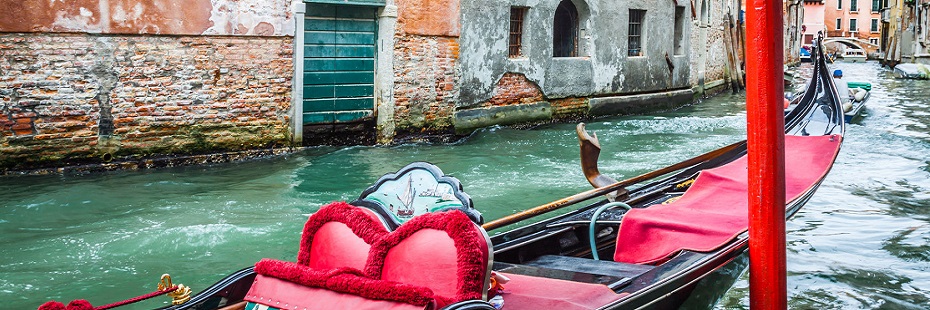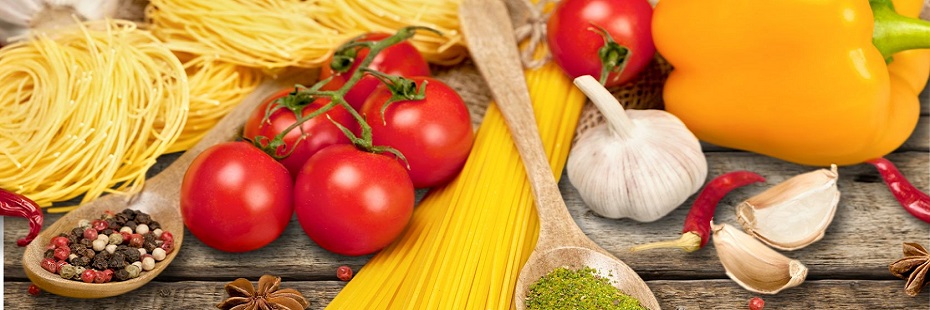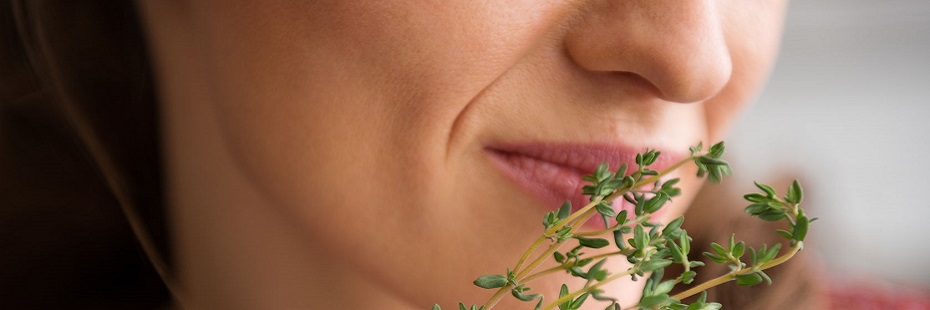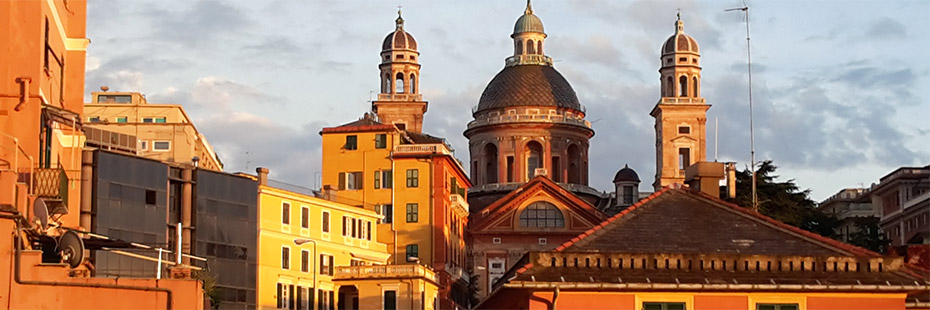| Roma diventa caldissima nei primi giorni di luglio. Le poche ore fresche della mattinata portano poco sollievo. Ondate di caldo salgono dalla pavimentazione di pietra della "città eterna" e il livello d'acqua del fiume Tevere si abbassa ogni giorno. | Rome becomes white hot in the early July days. The few cool hours in the early morning bring little relief. Heat waves rise up from the stone pavements of the "eternal city" and the water level of the Tiber River sinks daily. |
 |
|
| Questo è il momento in cui i romani cominciano a trasferirsi nelle loro residenze estive al mare o in montagna. | That’s the time that Romans begin moving toward their summer residences on the sea or in the mountains. |
 |
|
| Anche il Papa lascia
il Vaticano per trasferirsi nella residenza estiva vicino ai
colli Albani, o Castelli Romani, come i romani chiamano da
molto tempo queste colline vulcaniche che si elevano fino a
1000 metri appena a sud delle porte della città. La residenza del Papa nella città dei castelli di Castelgandolfo, costruita nel XVII secolo, è tradizionalmente la residenza estiva dei Papi romani. Tutti i Castelli erano territorio del Papa per secoli e appartenevano ai possedimenti vaticani. |
The Pope too has
just left the Vatican for his summer residence in the nearby
Alban Hills, or the "Castelli Romani" as Romans have
long called those volcanic hills that rise up as high as 1000
meters just at the south gates of city. The Papal Palace in the "castelli" town of Castelgandolfo that was built in the 17th century has long been the traditional summer residence of the Roman popes. All of the "castelli" were papal territory for centuries and belonged to the papal estates. |
| Oggi, anche se la Chiesa è sempre profondamente radicata in queste colline, i castelli hanno un significato più mondano per i romani. I castelli significano ottimo vino e cucina durante le gite domenicali verso i laghi del cratere e i boschi selvatici. | Today, though the Church is still deeply entrenched in those hills, the "castelli" have more mundane meanings for Romans. The "castelli" mean good food and wine on Sunday outings to the crater lakes and the rugged forests. |
| Andare ai castelli significa cenare e bere in un numero infinito di trattorie e taverne. Molti romani hanno trovato qui il loro posto favorito, mentre gli amanti mondiali del vino sanno che i "Castelli Romani" sono la patria dei vini. | To go to the "castelli" means dining and wining in the countless trattoria’s and taverns. Many Romans have their favorite places there, while wine lovers of the world know that the "castelli romani" are wine country. |
 |
|
| CASTELLI ROMANI
Geologicamente i "castelli" sono una serie di alte colline di origine vulcanica, con la stessa formazione rocciosa e contenuto di minerali in tutta la zona. La prima eruzione vulcanica lasciò un enorme cratere di 25 km di diametro. Fu poi seguita da eruzioni minori e dall'estinzione dei vulcani che lasciarono i due meravigliosi crateri dei laghi di Albano e Nemi. |
CASTELLI ROMANI
Geologically the "castelli" are a series of high hills of volcanic origin, with rock formations and mineral content the same in the whole area. The first volcanic eruption left a massive crater about 25 kms. across, followed by smaller eruptions end then extinction of the volcanoes which left the two magnificent crater lakes of Albano and Nemi. |
| Giù nell'epoca romana le famiglie ricche cominciarono a passare le loro vacanze nella regione per fuggire il caldo di Roma. Lanciarono la moda del costruire ville appariscenti, ognuna che cercava di offuscare l'altra. Questo processo di costruzione fu stimolato dalle larghe strade romane che dalla città raggiungevano le colline, come la famosa Via Appia, tuttora esistente. | Already in the Roman era, rich families began spending holidays there to escape from the Rome heat. They set the fashion of building showy villas, each trying to outdo the other. That building process was stimulated by the Roman 'highways' reaching from the city into the hills, like the famous Via Appia which exists today. |
| Durante l'era feudale del IX e X secolo, i feudatari, come la potente famiglia Conti, fortificarono le loro residenze sui colli per difendersi dagli attacchi da nord e da sud e per tentare di liberarsi dall'autorità della Chiesa. Queste fortificazioni erano dei castelli, i "castelli". Nel XV secolo i castelli furono trasformati in città, dato che sempre più artigiani, contadini e commercianti si stabilivano intorno alle loro mura. Diventarono i "castelli romani" così come li conosciamo oggi. Più tardi, nel XVI secolo tornò nuovamente di moda costruirvi delle ville sontuose che oggi sono diventate una parte importante della cultura italiana; ville come quella degli Aldobrandini, Villa Borghese e la Barigioni, tutte a Frascati. | During the feudal era of the 9th and 10th centuries, feudatories like the powerful Conti family fortified their residence in the hills to defend themselves against attacks from north and south, and in their attempts to free themselves from Church authority. Those fortifications were the early castles, the "castelli". In the 15 century the castles were transformed into towns as more and more artisans, farmers and shopkeepers gathered around their walls. They became the "castelli romani" as we know those towns today. Then in the 16th century it again became fashionable to build sumptious villas there which today are an important part of Italy's culture; villas like the Aldobrandini, the Villa Borghese and the Barigioni all in Frascati. |
 |
|
| Il numero attuale dei castelli è soggetto di dispute. Le città principali chiamate propriamente "castelli" sono: Frascati, Monte Porzio, Rocca Priori, Grottaferrata, Marino, Castelgandolfo, Albano, Ariccia, Genzano, Nemi, Lanuvio, Rocca di Papa e Velletri. | The actual number of "castelli" is a subject of dispute. The chief towns properly called "castelli" are: Frascati, Monte Porzio, Rocca Priori, Grottaferrata, Marino, Castelgandolfo, Albano, Ariccia, Genzano, Nemi, Lanuvio, Rocca di Papa and Velletri. |
| La città più grande è Frascati con circa 40.000 abitanti, mentre i castelli ne hanno un totale di circa 300.000. | The largest town is Frascati with 40,000 inhabitants, while the "castelli" have a total of some 300,000. |
| Vicini uno all'altro, allineati lungo le creste del cratere, i castelli sono magnifici visti da Roma e sembrano lanciare segnali in direzione dell'osservatore. E dai balconi e dalle terrazze dei castelli si può vedere la vita del centro Italia espandersi di fronte all'osservatore, fino al mare Mediterraneo verso Anzio e Torvaianica, fino all'enorme e tentacolare città di Roma, e alle montagne dell'Abruzzo. | Close to one another, ranged along the crests of the crater, the "castelli", are magnificent seen from Rome and seem to beacon to you. And from the balconies and terraces of the "castelli" you can see much of central Italian life spread out before you, to the Mediterranean Sea toward Anzio and Torvaianica, to the huge sprawling city of Rome, and the Abruzzi Mountains. |
 |
|
| LE COSE DA VEDERE
I tesori dei castelli sono infiniti. Certamente i due laghi di Albano e Nemi con i loro crateri estinti. Certamente le grandi ville come quella degli Aldobrandini. |
SIGHT - SEEING
"Castelli" treasures are endless. Certainly the two lakes of Albano and Nemi deep down in their extinct craters. Certainly the great villas like the Aldobrandini. |
| In alto, su un colle sopra la città di Frascati, guarda maestosamente in basso verso Roma. I suoi giardini e le fontane magnifiche, i giochi d'acqua e la vista dai suoi terrazzi giustificano un viaggio ai castelli. Le ville dei Castelli Romani, come tutte le ville italiane della Toscana e del Veneto, sono l'espressione più alta dell'arte di quel periodo. | High on its hill over the town of Frascati, it looks down majestically over Rome. Its magnificent gardens and fountains and water games and the views from its terraces justify the trip to the "castelli". The villas of the "castelli romani" like all the Italian villas of Tuscany and Veneto are expression of the highest art of the period. |
| Una curiosità del tempo dei Romani sono le grandi riserve d'acqua chiamate "i cisternoni", ad Albano. Costruite dai Romani per rifornire d'acqua l'accampamento delle legioni stanziate nel luogo, e le ville private e imperiali, le cisterne sono famose in tutto il mondo, non solo per la loro grandezza, ma anche perché, con i loro acquedotti, queste cisterne funzionano ancora oggi. Le caverne sottoterra e piene d'acqua sono circa 50 x 50 metri con 6 metri di profondità. | A curiosity from Roman times is the great water reservoir called "i cisternoni", in Albano. Built by the Romans to supply water to the huge encampment of the Roman legions there and to the private and imperial villas, the cisterns are famous throughout the world. Not only because of their size, but because the cisterns and their acqueducts still function today. The water-filled underground caverns are nearly 50 x 50 meters, and 6 meters deep. |
| Il palazzo papale a Castelgandolfo, le rovine della vecchia Tusculum, sopra Frascati, l'anfiteatro, i bagni termali, le magnifiche chiese romaniche e barocche, i labirinti delle città dei castelli, i laghi vulcanici, i musei civici e una ricca vita culturale si fondono insieme per creare una terra magica per i visitatori. | The Papal palace in Castelgandolfo, the ruins of the old Tusculum high over Frascati, amphiteatre, termal baths, magnificent Romanesque and Baroque churches, the labyrinths of "castelli" towns, crater lakes, civic museums and a rich cultural life blend together to create a magic land for visitors. |
| LA CUCINA
Nei castelli, cucinare è considerato un'arte e mangiare un rito. Il tipico ristoratore dei castelli crede che sia essenziale preparare attentamente l'anima all'atto del mangiare e proibisce di guardare l'orologio e il portafoglio. |
FOOD
Cooking is considered an art in the "castelli" and eating a rite. The typical "castelli" restaurateur believes it's essential to prepare carefully the soul for eating and forbids looking at the clock and your pocketbook. |
| Il pane rustico che gli Etruschi tostavano con aglio e olio è l'antipasto favorito. Un minestrone di verdure passate con tocchetti di pane tostato è un sanissimo primo piatto. Gli spaghetti con l'olio, l'aglio e le erbe o con il sugo di funghi. Fagioli bianchi con prosciutto. La famosa insalata dei castelli con broccoli e funghi. Una grande varietà di pasta e poi arrosti e grigliate.E quei funghi, come tutti gli altri piatti, richiedono il vino. | Etruscans toasted country bread with oil and garlic - is a favorite hors d’oeuvres. A minestrone of strained vegetables with pieces of toasted bread is a healthy first course. Or spaghetti with oil, garlic and herbs or with a mushroom sauce. White beans with ham. Famous "castelli" broccoli salad and mushrooms. A wide variety of pasta dishes and then roasts and grilled meats. And those mushroom like all the other dishes call for wine. |
 |
|
| VINO
Fino a pochi anni fa, i carretti di vino dipinti allegramente partivano dai castelli ogni notte a gruppi di tre o quattro per arrivare a Roma la mattina presto. Ogni carretto tirato dai muli portava otto barili dipinti, contenenti 60 litri di vino ognuno. I muli conoscevano la strada e un cane in cima alla piramide di barili stava di guardia, così i carrettieri potevano dormire durante il tragitto notturno. Con le lanterne ad olio che pendevano da un lato e dei campanelli che tintinnavano nella notte, i carretti di vino erano parte della cultura dei castelli. |
WINE
Until not many years ago, the gaily painted wine carts left the "castelli" late every night in groups of three or four to arrive in Rome in the early morning, hearing the famous "castelli" wines. Each mule-pulled cart carried eight painted barrels with 60 liters of wine in each. The mules knew the road and a dog on top of the pyramid of barrels was on guard, so that the "carrettieri" – drivers - slept through the night. With the oil lantern hanging on the side and their bells jangling in the night, the wine carts were part of the "castelli" culture. |
| Lo scrittore italiano
Malaparte chiamava sempre i vini dei castelli poesia. Questi
sono rinomati mondialmente. I vini bianchi sfusi serviti in
quasi ogni ristorante romano provengono quasi naturalmente
dai castelli; questi vini sono: Frascati, Marino, Albano, Velletri,
Fontana di Papa, Fontana di Candida. Le cantine dei castelli sono estremamente affascinanti. Si racconta la storia di qualche anno fa, di un anziano signore romano che amava camminare fino a Frascati, sotto il caldo sole estivo, per provare in seguito il contrasto del freddo delle cantine e della freschezza del vino bianco. La fama delle cantine di vino dei castelli è giustificata perché questi vini superbi si gustano meglio qua, nelle taverne e ristoranti dei castelli. L'esperienza di questo anziano signore romano è incomparabile. |
The Italian writer
Malaparte always called "castelli" wines poetry.
They are world famous. The open white wines served in almost
every Rome restaurant are quite naturally from the "castelli":
those wines bear names like Frascati, Marino, Albano, Velletri,
Fontana di Papa, Fontana di Candida. The "castelli" wine cellars themselves are fascinating. There is a story about an elderly Roman of a few years back who liked to walk all the way to Frascati under the hot summer sun just to feel the contrast of the coolness of the wine cellars and the freshness of the white wines. The fame of the "castelli" wine cellars are justified, because those superb wines are best drunk there, in the tavern and restaurants of the "castelli". The experience of that old Roman is incomparable. |
| Iniziate dalla città di Frascati, 327 metri di altezza, a 20 km da Roma. La si può raggiungere con i frequenti treni che partono dalla stazione Termini di Roma o con la metropolitana da Cinecittà e poi con l'autobus. La cosa migliore è l'auto, lungo la Via Tuscolana. Da là si viaggia lungo la cresta del cratere fino alle città dei castelli. Visitate le ville, passeggiate intorno ai laghi, partecipate alle feste di paese, entrate nelle chiese e soprattutto mangiate e bevete quei vini. | Start from the town of Frascati at 327 meter altitude, 20 kms. from Rome. It can be reached by frequent trains from Rome’s Termini station, or by metro to Cinecittù and then by bus. Best is by auto along Via Tuscolana. From there you wind around the crest of the crater to the "castelli" towns. Visit the villas, walk along the lakes, see the village festivals, see the churches and above all eat and drink those wines. |
| Questo è un modo unico di visitare Roma e le spiagge circostanti; perché non vivere meglio e spendere meno visitando da qui Roma e le coste? Ci vuole un'ora per arrivare alle lunghe spiagge di sabbia di Torvanica e Anzio, meno per arrivare a Roma. E ogni pomeriggio si torna a casa ai castelli. Frascati è un posto in cui farlo. | Here is a new and unique way for visiting Rome and the nearby beaches: why not live better and cheaper in the "castelli" and visit from there Rome and the seashore? One hour away to the long sand beaches of Torvanica and Anzio, less to Rome. And back home each afternoon to the "castelli". Frascati is one place to do it. |
| Ci sono molti hotel
intimi e piccolini lungo i castelli, tutti a prezzi moderati.
Per stare lontani dalla città più grande, Frascati,
provate Rocca di Papa, abbarbicata sul fianco di una collina
a 730 metri di altezza. Nella città vecchia e nelle
zone circostanti ci sono 36 ristoranti tipici con la caratteristica
cucina dei castelli e un numero di alberghetti a buon prezzo.
Per le informazioni turistiche, contattate l'Azienda Autonoma di Soggiorno e Turismo dei Laghi e Castelli Romani – tel (39) (06) 93 21 323. |
There are many intimate
small hotels throughout the "castelli"
at moderate prices. To stay away from larger Frascati you can
try Rocca di Papa hanging on the side of a hill at 730 meters
altitude. In the old town and surroundings there are 36 typical
restaurants with the characteristic "castelli" cuisine
and a number of small inexpensive hotels.
For all touristic information contact: Azienda Autonoma di Soggiorno e Turismo dei Laghi e Castelli Romani – tel (39) (06) 93 21 323. |
31 Luglio 2025
TESTIMONIAL (more...):
"I spent 250 bucks last month on Rosetta Stone, Level 5. It wasn't bad, even pretty good. Your course is far better. You dip into the ..."


